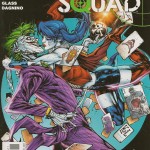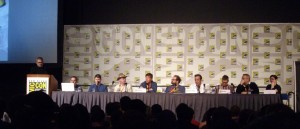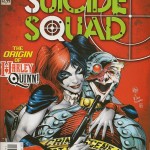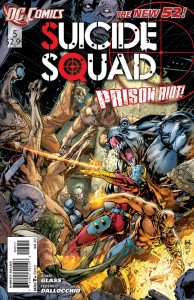Am I the only one having fun here, boys?
– Harley Quinn
That’s the first line of Suicide Squad #17, and it’s pretty much a complete review in and of itself.
This is not the smartest comic you will read this week. It is not the finest attempt at visual narrative aspiring toward classic literature that you are ever going to see. It doesn’t have the most intricate plot – hell, it doesn’t have much plot, period. And with the exception of two panels for Harley and some backstory for Yo-Yo, the closest thing this comic has to character development is the establishment that Harley’ll let you suck her toes if you kill someone for her. So if you’re looking for some kind of high-falutin’ example of comics as the entertainment of choice for the discerning sophisticate, this is not the book for you.
However, if you are looking for non-stop, balls-out violent and gory super villain action, with entertaining repartee and a few damn good jokes? Suicide Squad #17 is about the best three bucks you can spend this week.




 Podcast RSS Feed
Podcast RSS Feed iTunes
iTunes Google Play
Google Play Stitcher
Stitcher TuneIn Radio
TuneIn Radio Android
Android Miro Media Player
Miro Media Player Comics Podcast Network
Comics Podcast Network